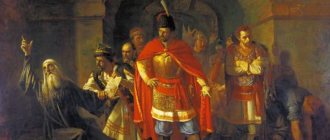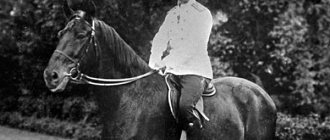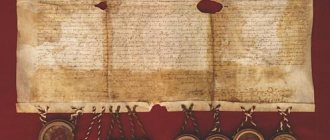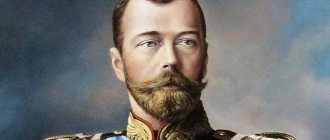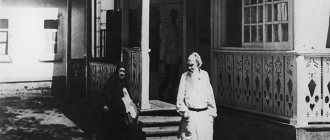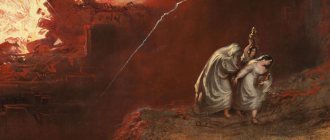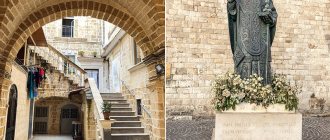Who are the Royal Martyrs
Royal Passion-Bearers, Royal Martyrs, Royal Family - this is how, after canonization, the Russian Orthodox Church calls the last Russian Emperor Nicholas II and his family: Empress Alexandra Feodorovna, Tsarevich Alexei, Grand Duchesses Olga, Tatiana, Maria and Anastasia.
They were canonized for the feat of martyrdom - on the night of July 16-17, 1918, on the orders of the Bolsheviks, they, along with the court doctor and servants, were shot in Ipatiev’s house in Yekaterinburg.
Queen Alexandra
Princess Alice of Darmstadt was the granddaughter of Queen Victoria. She was born in 1872 in Darmstadt and baptized in the Lutheran Church. The mother was very pious, she strove to keep God’s commandments, to help people, the sick and the poor, because of which she received a fatal illness. After the death of the mother, the family was left with seven children. Soon his father, Duke Ludwig the Fourth, also died.
The mother instilled in the children faith in Christ , piety and the desire to help people. These qualities can be seen in Alice. At the wedding of her older sister (the future Princess Elizabeth) and Prince Sergei, she met young Nicholas. He admitted later that he fell in love with her at first sight. Princess Elizabeth assisted their correspondence. A few years later, Nikolai proposed to Alice. Their love was like a fairy tale. Their feelings remained fresh, despite a quarter of a century of marriage. Their touching correspondence has survived to this day.
After the discovery of her youngest son's illness, the empress suffered from a serious heart disease. She could hardly walk and had severe shortness of breath. But, despite her serious illness, the empress worked in a hospital during the war, cared for the wounded and helped her sister (Princess Elizabeth) perform difficult operations.
Alexandra Fedorovna had great fortitude. She not only did not despair in difficult times, but also knew how to support her husband. During the difficult time of the abdication of the sovereign, she and her children were seriously ill. But she did not lose heart, comforting her children and husband.
Murder of the Romanov family
The last Russian emperor, Nicholas II Romanov, abdicated the throne on March 2, 1917. After his abdication, he, along with his family, doctor and servants, were placed under house arrest in the palace in Tsarskoye Selo. Then, in the summer of 1917, the Provisional Government sent the prisoners into exile in Tobolsk. And finally, in the spring of 1918, the Bolsheviks exiled them to Yekaterinburg. It was there that on the night of July 16-17, the Royal Family was shot - by order of the executive committee of the Ural Regional Council of Workers', Peasants' and Soldiers' Deputies.
Some historians believe that the order for execution was received directly from Lenin and Sverdlov. The question of whether this is so is controversial; perhaps historical science has yet to find out the truth.
Very little is known about the Ekaterinburg period of exile of the Royal Family. Several entries in the emperor's diary have reached us; There are testimonies from witnesses in the case of the murder of the Royal Family. In the house of engineer Ipatiev, Nicholas II and his family were guarded by 12 soldiers. Essentially, it was a prison. The prisoners slept on the floor; the guards were often cruel to them; prisoners were allowed to walk in the garden only once a day.
The royal passion-bearers courageously accepted their fate. A letter from Princess Olga has reached us, where she writes: “Father asks us to tell all those who remained devoted to him, and those on whom they may have influence, that they do not take revenge for him, since he has forgiven everyone and is praying for everyone, and so that they do not avenge themselves, and so that they remember that the evil that is now in the world will be even stronger, but that it is not evil that will defeat evil, but only love.”
Those arrested were allowed to attend services. Prayer was a great consolation for them. Archpriest John Storozhev performed the last service in the Ipatiev House just a few days before the execution of the Royal Family - July 14, 1918.
On the night of July 16-17, the security officer and leader of the execution, Yakov Yurovsky, woke up the emperor, his wife and children. They were ordered to gather under the pretext that unrest had begun in the city and they urgently needed to move to a safe place. The prisoners were escorted to a semi-basement room with one barred window, where Yurovsky informed the Emperor: “Nikolai Alexandrovich, according to the resolution of the Ural Regional Council, you and your family will be shot.” The security officer shot several times at Nicholas II, and other participants in the execution shot at the rest of the condemned. Those who fell but were still alive were finished off with shots and bayonets. The bodies were taken out into the yard, loaded into a truck and taken to Ganina Yama - an abandoned Isetsky. There they threw it into a mine, then burned it and buried it.
Along with the Royal family, the court doctor Yevgeny Botkin and several servants were shot: the maid Anna Demidova, the cook Ivan Kharitonov and the valet Alexei Trupp
On July 21, 1918, during a service in the Kazan Cathedral in Moscow, Patriarch Tikhon said: “The other day a terrible thing happened: the former Sovereign Nikolai Alexandrovich was shot... We must, obeying the teaching of the word of God, condemn this matter, otherwise the blood of the executed person will fall on us, and not only on those who committed it. We know that he, having abdicated the throne, did so with the good of Russia in mind and out of love for her. After his abdication, he could have found security and a relatively quiet life abroad, but he did not do this, wanting to suffer with Russia. He did nothing to improve his situation and resignedly resigned himself to fate.”
For many decades, no one knew where the executioners buried the bodies of the executed Royal Martyrs. And only in July 1991, the presumed remains of five members of the imperial family and servants were discovered near Yekaterinburg, under the embankment of the Old Koptyakovskaya Road. The Russian Prosecutor General's Office opened a criminal case and during the investigation confirmed that these were indeed prisoners of the Ipatiev House.
After several years of research and public controversy, on July 17, 1998, the martyrs were buried in the Peter and Paul Cathedral in St. Petersburg. And in July 2007, the remains of the son of Tsarevich Alexei and Grand Duchess Maria were found.
The Lives of the Holy Royal Passion-Bearers: Tsar Nicholas, Tsarina Alexandra, Tsarevich Alexy, Grand Duchesses Olga, Tatiana, Maria and Anastasia
All-Russian Emperor Nicholas II was born on May 6, 1868, on the day of the holy righteous Job the Long-Suffering.
He was the eldest son of Emperor Alexander III and his wife Empress Maria Feodorovna (daughter of the Danish king Christian VII) and was destined from birth to rule one of the world's greatest empires. The upbringing he received under the guidance of his father was strict, almost harsh. “Neither I nor the Grand Duchess want to turn them into greenhouse flowers. They should pray well to God, study, play, and be naughty in moderation. I need normal, healthy Russian children,” these were the instructions given by Emperor Alexander III to his sons’ first teacher, A.P. Ollengren. The Heir's upbringing was strictly Orthodox, and even as a small child he showed a special love for God.
The heir received a very good education at home. The program of his upbringing and education was carried out conscientiously: the Emperor knew several languages, was well versed in military affairs and was a very erudite person. To prepare the Tsarevich for public office, classes on political history were introduced into his school curriculum.
Education was completed in 1890. At the end of the same year, the Tsarevich sets off on a long, almost round-the-world trip. Visits Egypt, India and Japan, returning to St. Petersburg via Siberia. In Japan, in the city of Otsu, an attempt was made on his life - he was saved by the Greek prince George, who deflected the blow of a fanatic. After his return, Alexander III gradually began to involve the Heir in participation in government. The Tsarevich was the chairman of the Committee for the Construction of the Great Siberian Road, and headed the Committee to Combat Famine in 1891–1892; sat on the State Council and the Committee of Ministers.
Tsarevich Nikolai Alexandrovich had to endure the first serious test of willpower in connection with his marriage. Back in 1884, he first saw the bride’s sister, the young Princess Alice of Hesse-Darmstadt, at the wedding of his uncle Grand Duke Sergei Alexandrovich and Grand Duchess Elizabeth Feodorovna.
Empress Alexandra Feodorovna (Princess Alice Victoria Elena Louise Beatrice) was born on May 25, 1872 in Darmstadt, the capital of a small German duchy, by that time already forcibly incorporated into the German Empire. Alice's father was Grand Duke Ludwig of Hesse-Darmstadt, and her mother was Princess Alice of England, the third daughter of Queen Victoria. In her infancy, the future Russian Empress, Princess Alice, was a cheerful, lively child, for which she received the nickname “Sunny” (Sunny). The children of the Hessian couple (there were seven of them) were brought up in deeply patriarchal traditions. Their life passed according to the rules strictly established by their mother; not a single minute should pass without doing anything. The children's clothing and food were very simple. The girls lit the fireplaces themselves and cleaned their rooms. From childhood, their mother tried to instill in them qualities based on a deeply Christian approach to life.
Alix, as Alice was called by her relatives, suffered her first grief at the age of six - at that time, at the age of only thirty-five, her mother died of diphtheria. After the tragedy she experienced, little Alix became withdrawn, alienated, and began to avoid strangers; She calmed down only in the family circle. After the death of her daughter, Queen Victoria transferred her love to her children, especially the youngest Alix. Her upbringing and education from now on took place under the control of her grandmother. The future Empress was more English than German in character, tastes and habits. Alix was an unusually diligent student; already at the age of fifteen she was thoroughly versed in history, geography, English and German literature, and played the piano excellently. The princess had an interest in philosophy and even political issues.
From the moment Tsarevich Nikolai Alexandrovich and Princess Alice met, a strong friendship arose between them, which then turned into deep and ever-increasing love. When in 1889, having reached adulthood, the Heir turned to his parents with a request to bless this marriage, his father refused, motivated by the Heir’s youth. I had to submit to the harsh will of my father. In 1894, seeing the unshakable determination of his son, usually soft and timid with his father, Alexander III gave his blessing for the marriage. The only obstacle remained the conversion to Orthodoxy, required by Russian law from the bride of the Heir. A Protestant by upbringing, Alice was deeply convinced of the truth of her confession and for a long time resisted changing her religion. It took the Tsarevich a lot of work to convince her, but after much persuasion the princess agreed. “A wonderful and unforgettable day in my life - the day of my engagement to my beloved Alix,” the Heir will write in his diary on April 8, 1894.
However, this joy of mutual love was soon overshadowed by a sharp deterioration in the health of his father, Emperor Alexander III. A trip to Crimea in the fall of 1894 did not bring relief; a serious illness inexorably took away the Tsar’s strength. On October 20, the Emperor died in the Livadia Palace, and the next day Princess Alice was united to Orthodoxy through Confirmation in the palace church of the Livadia Palace, receiving the name Alexandra Feodorovna. Despite the mourning for his father, it was decided not to postpone the wedding, but it took place in the most modest atmosphere on November 14, 1894. The days of family happiness that followed soon gave way for the new Emperor to the need to assume the entire burden of governing the Russian Empire.
The early death of Alexander III did not allow him to complete the preparation of the Heir to assume the duties of a monarch. He had not yet been introduced to the highest state affairs; after his accession to the throne, he had to learn a lot from the reports of his ministers. All this, together with the awareness of the greatest responsibility for the fate of the state, sometimes led the Sovereign himself to admit that he was unprepared for power; he admitted this to Grand Duke Alexander Mikhailovich shortly after the death of his father, and Empress Alexandra Feodorovna later spoke about this.
However, the character of the Sovereign, who was twenty-six years old at the time of his accession, and his worldview had already been determined by this time. But they were almost unknown to the Russian people and society - the Tsarevich was overshadowed by the powerful figure of Alexander III. The heir gave the impression of a gentle and tactful man; His modesty, prudence and lack of outward determination led many to the conclusion that he lacked a strong will. Persons standing close to the court noted his lively mind - he always quickly grasped the essence of the issues presented to him - an excellent memory, especially for faces, and a noble way of thinking.
The basis of the views of Emperor Nicholas II was his father’s political testament: “I bequeath to you to love everything that serves the good, honor and dignity of Russia. Protect autocracy, bearing in mind that you are responsible for the fate of your subjects before the throne of the Almighty. Let faith in God and the holiness of your royal duty be the basis of your life. Be strong and courageous, never show weakness. Listen to everyone, there is nothing shameful in this, but listen to yourself and your conscience.”
K.P. Pobedonostsev, who was among the mentors of the Tsarevich, instilled in his royal student a negative view of parliamentary rule as a “great lie,” as well as disdain for the “terrible power that calls itself public opinion.” The Emperor deeply believed that for the hundred million Russian people, tsarist power was and remains sacred. He always had the idea that the Tsar and Queen should be closer to the people, see them more often and trust them more, because he will not deceive the one whom he considers almost equal to God, and will always tell the truth, not like ministers and officials who don’t care about people’s tears and needs. The Tsar himself spoke out more than once in the spirit that there could be no doubt about the great love of the people for him. The people mourn only because they do not see him often enough.
Meanwhile, the appearance of a new Tsar on the throne aroused completely different hopes in society - for the continuation of the policy of reforms of Tsar-Liberator Alexander II, which were almost completely rejected during the reign of his son. This was facilitated by an era of external and internal calm - the revolutionary parties were defeated in the early 1880s and had not yet formed into a new force. Society at that time was ready to limit itself to the most moderate reform program. On the occasion of his accession to the throne, zemstvo circles addressed the Sovereign with addresses containing restrained, most respectful wishes for modest constitutional reform and some measures to improve the material and legal situation of the peasants. In response to these wishes, sounded in the “most loyal addresses” from the zemstvos - and they spoke on behalf of a significant part of Russian society, on January 17, 1895, the Emperor promised to “protect the principles of autocracy as firmly and steadily as Emperor Alexander III protected them.” From the Tsar’s point of view, this was, of course, an act of political honesty - he really believed that the invincibility of autocracy was a necessary condition for the prosperity of Russia and its people. However, the public response to the Emperor's first speech was negative. From the very beginning of his reign, tension emerged between the Tsar and the liberal-minded part of society.
The year 1896 was marked by a magnificent coronation celebration in Moscow. The Crowning of the Kingdom is the most important event in the life of a monarch, especially when he is imbued with deep faith in his recognition. The Sacrament of Holy Confirmation was performed over the Royal couple for the second time as a sign that “just as there is no higher, so there is no more difficult on earth than royal power, there is no burden heavier than royal service,” which requires special grace-filled strengthening of the monarch’s powers. From that moment on, the Emperor felt like a true Anointed One of God. Betrothed to Russia since childhood, he seemed to have married her on that day.
The subsequent days of the coronation celebrations were overshadowed by the terrible disaster on the Khodynka Field. On the night of May 18, the crowd, awaiting the distribution of royal gifts, suddenly began to move, and a stampede occurred in which more than a thousand people died and several hundred were injured. The next day, the Royal spouses attended a memorial service for the dead and took care of providing assistance to the victims; those responsible for the disaster suffered penalties.
Having become the Supreme Ruler of a huge empire, in whose hands the entire legislative, executive and judicial power was practically concentrated, Nikolai Alexandrovich took upon himself enormous historical and moral responsibility for everything that happened in the state entrusted to him.
Assessments of Nicholas II as a statesman are extremely contradictory. Speaking about this, we should never forget that, when comprehending state activity from a Christian point of view, we must evaluate not this or that form of state structure, not the place that a specific person occupies in the state mechanism. The only thing that can be assessed is the extent to which a person was able to embody Christian ideals in his activities. It should be noted that Nicholas II took the duties of the monarch very seriously, as a sacred duty.
The first years of the reign of Emperor Nicholas II were relatively calm, which allowed the government to carry out a number of reforms that had a beneficial effect on the situation in the Russian Empire. In 1896, a monetary reform was carried out, giving Russia a hard currency backed by gold. Minister of Finance Count S. Yu. Witte emphasized that in the implementation of this reform, which had many opponents, the positive opinion of the Emperor played a decisive role. In 1901, school reform was carried out; within ten years, education loans doubled.
Strikes in factories forced the government to pay attention to the labor issue. The Emperor repeatedly expressed out loud the idea that this question was close to his heart. And this was manifested in his consistent support for the development of social legislation in the direction of protecting and expanding the rights of workers and limiting the privileges of entrepreneurs throughout his reign. With his personal participation in resolving this issue, he wanted to bring calm to the working environment.
The difficult situation in the countryside, the constant threat of famine, the ruin of peasant farms and the decline of landownership made the agrarian question one of the most important. To get it off the ground, committees were created in the provinces to determine the needs of the agricultural industry. Their work was quite fruitful, but could not prevent new outbreaks of peasant unrest in different places. In the first years of the twentieth century, revolutionary terror began again, suppressed by Emperor Alexander III. There are a number of political assassinations and unrest in the cities. These facts indicate such a degree of social tension when state power is already losing control over the situation. This tension was soon resolved by the revolutionary explosion of 1905.
The life of the Royal couple during these years was smooth and happy. The Emperor, naturally reserved, felt calm and complacent, primarily in a narrow family circle, and only Alexandra Feodorovna truly knew him. Family was the main thing in life for the Empress. This was facilitated both by the natural properties of her character and by the gradually brewing conflict with high secular society. The Empress did not like social interaction or balls. Alexandra Feodorovna's shyness was regarded as coldness and arrogance. Her strict upbringing was alien to the moral laxity that reigned in the court environment; the Empress's religiosity was called oddity, even hypocrisy.
Indeed, deep religiosity distinguished the Imperial couple from representatives of the then aristocracy. Of course, the education of the children of the Imperial family was imbued with a religious spirit from the very beginning. All its members lived in accordance with the traditions of Orthodox piety. Mandatory attendance at divine services on Sundays and holidays and fasting during fasting were an integral part of palace life. However, the personal religiosity of the Tsar and especially his wife was undoubtedly something more than simple adherence to traditions. The royal couple not only visit churches and monasteries during their numerous trips, venerate miraculous icons and relics of saints, but also make real pilgrimages, as was the case in 1903 during the glorification of St. Seraphim of Sarov. Brief services in court churches no longer satisfy the Emperor and Empress. Services are held especially for them in the Tsarskoye Selo Feodorovsky Cathedral, built in the style of the 16th century. Here, in the atmosphere of Moscow Rus' during the time of Tsar Alexei Mikhailovich, especially beloved by Emperor Nicholas, one could fully penetrate the spirit of statutory Orthodox worship and ancient Russian piety. Empress Alexandra prayed here in front of a lectern with open liturgical books, carefully watching the service. All the priestly prayers were read aloud especially for her at the altar.
A year after the wedding, on November 3, 1895, the first daughter, Grand Duchess Olga, is born; she was followed by the birth of three daughters, full of health and life, who were the joy of their parents - Grand Duchesses Tatiana (May 29, 1897), Maria (June 14, 1899) and Anastasia (June 5, 1901).
But this joy was not without an admixture of bitterness - the cherished desire of the Royal couple could only be fulfilled by the birth of the Heir. This happened on August 12, 1904, a year after the Royal Family’s pilgrimage to Sarov for the celebration of the glorification of St. Seraphim. It seemed that all the sorrows were forgotten and a new bright streak began in family life. But a few weeks after the birth of the Tsarevich, it turned out that he had hemophilia. The child's life hung in the balance all the time - the slightest bleeding could lead to his death. The mother’s suffering was especially severe, since it was she who unwittingly became the cause of her son’s terrible illness.
The foreign policy of Emperor Nicholas II has always been distinguished by the desire to introduce Christian religious and moral principles of his worldview into public life. As early as 1898, he approached the governments of Europe with a proposal to convene a conference to discuss the most effective methods of ensuring and maintaining world peace and setting limits to the growth of armaments. As a result of this appeal, the Hague Peace Conferences of 1899 and 1907 took place, the decisions of which are largely valid to this day. But, despite the Tsar’s sincere desire for peace, during his reign Russia participated in two bloody wars that led to internal unrest.
On January 28, 1904, Japan began military operations near Port Arthur without declaring war. Although the Emperor attached great importance to Asian policy, the country, suddenly drawn into war, was unprepared for it. Public opinion was not inspired by the idea of the greatness of the empire; it was indifferent to the war, and the “left” was actively against it. Nevertheless, at the first moment a patriotic mood prevailed: it was necessary to repel Japan! The war, however, immediately took on an unfavorable character for Russia. The Russian army began to retreat and suffered one defeat after another. Throughout 1904, the Emperor traveled a lot around Russia, visiting military units, admonishing those leaving for the front. But overall the situation was getting worse. On December 19, after many months of heroic defense, Port Arthur was surrendered. The final blow was the death of a significant part of the Russian fleet in the Tsushima Strait on May 14, 1905. Thanks to the successes of Russian diplomacy at the Portsmouth Conference, peace was concluded on relatively favorable terms for Russia, but Port Arthur and the southern half of Sakhalin had to be given to the Japanese. The Emperor did not expect Japan's consent and did not want it. But when this happened, he accepted it as providential: “This is probably good, because it should be so,” he writes in his diary.
People close to him often heard similar words from the lips of the Emperor. Here one can undoubtedly see his firm faith in God’s Providence. According to Count V.N. Kokovtsov, the Emperor “believed that he was leading Russia to a bright future, that all the trials and tribulations sent by fate were fleeting and, in any case, transient, and that even if he personally was destined to endure the greatest difficulties, then the brighter and more cloudless the reign of his dearly beloved son will be... until the very moment of his renunciation, this faith did not leave him.” This optimism was indeed in the character of the Sovereign; it undoubtedly brightened up the very disconsolate days of his reign.
The inconsistency that observers note in the behavior of the Sovereign was largely explained by a feeling of powerlessness under the pressure of inexorable circumstances, in particular due to dramatic events in family life. The words of the Emperor, uttered by him while reflecting on the hopeless situation in the First Duma, are full of hidden meaning: “It happens that even the most hopeless illness goes away by some miracle, although there are hardly miracles in such matters.”
The inability for Russia to continue the war was also caused by the threatening growth of internal unrest. They were caused by purely internal problems of Russian life - the plight of the common people, which the revolutionaries took advantage of, and the confrontation with the government of a significant part of Russian educated society, and painful rumors about military defeats.
The revolution begins in Petrograd, where revolutionary agitators were particularly successful among the workers. In the first days of 1905, the “Meeting of Russian Factory Workers” operating in St. Petersburg, headed by priest Georgy Gapon, organized a strike that soon covered most of the capital’s enterprises. The strikers demanded not only an improvement in their economic situation. Under the influence of the socialists who were members of the strike committees, a program was drawn up that included a number of obviously impossible political demands (immediate elections to the Constituent Assembly, ensuring democratic freedoms). All this was set out in a petition to the Tsar, who was asked in the form of an ultimatum (“swear to fulfill them”) to accept all the demands of the workers. It was decided to organize a mass procession of workers to the Winter Palace on January 9 to deliver the petition personally to the Emperor. Russian legislation did not provide for the right to submit such petitions to the Emperor by anyone other than representatives of the noble class, and even suggested bringing their drafters to court.
Initially, the authorities did not attach much importance to the events in St. Petersburg and did not take any measures. The Emperor was informed about them only on January 5.
On January 6, during the blessing of water on the Neva, a buckshot shot was fired during a fireworks display; one of the bullets fell next to the Tsar. The investigation showed that there was no malicious intent, but everyone was talking about an assassination attempt. In the evening of the same day, the Emperor left for Tsarskoye Selo, and the capital authorities began to try to prevent the procession. Negotiations with Gapon led nowhere; on the contrary, the strike became general. A number of mistakes were made here: the Emperor, from whom the Minister of Internal Affairs, Prince P. D. Svyatopolk-Mirsky, hid the true scope of the movement, canceled the martial law imposed in the capital; It was also decided to allow the procession on the working outskirts, only preventing it from penetrating into the city center. This made a clash between workers and troops almost inevitable.
On the morning of January 9, the procession, carrying icons and royal portraits, which were supposed to give it a peaceful and decent character, moved from the city outskirts to the center. The lack of coherence in the behavior of the police and troops, as well as the clearly provocative behavior of Gapon and other revolutionaries who sought to direct the workers along the path of harsh opposition to the authorities, led to the fact that the troops in many places had to shoot at the crowd, but blank shots could not stop the procession. One hundred and fifty to two hundred people were killed, and even more were wounded. Although the resistance in St. Petersburg was suppressed by the evening, the events of January 9 became the beginning of the revolution in Russia.
The Emperor realized the tragic meaning of what had happened in the evening of the same day. Deliberately avoiding lengthy and emotional assessments of what was happening in his diary, he made the following diary entry: “Hard day. Serious riots occurred in St. Petersburg as a result of the workers’ desire to reach the Winter Palace. The troops had to shoot in different places in the city, there were many killed and wounded. Lord, how painful and difficult.”
Meanwhile, terror is intensifying in the country. On February 4, the Sovereign's uncle, Moscow Governor-General Grand Duke Sergei Alexandrovich, was killed by a bomb. The moderate opposition, dreaming of a reform program, also became more active. There were calls to convene a Zemsky Sobor or Constituent Assembly. In view of the seriousness of the situation, the Sovereign issues a Manifesto on February 18, calling on all the faithful sons of the Fatherland to fight sedition. The next day, in a rescript addressed to the Minister of Internal Affairs A.G. Bulygin, the Emperor writes about his intention “to attract the most worthy people, endowed with the trust of the people, elected from the population, to participate in the preliminary development and discussion of legislative proposals.”
Theoretically, the Emperor continued to consider the autocratic monarchy a more perfect form of government than the parliamentary one, especially for Russia, where there were no corresponding traditions, and a significant part of society stood in open opposition to the government. But he continued to deeply believe that the attitude of the majority of the population towards him was completely different, and the unrest was a purely superficial, urban phenomenon. The Tsar allowed the possibility of sharing power with the people's representatives, but saw the danger that the bulk of the population would see this as violence by the intelligentsia against the Tsar, which would lead to popular unrest. In addition, abdication of part of the responsibility in favor of parliament was tantamount for the Sovereign to abandoning his sacred duty, a manifestation of cowardice and irresponsibility - after all, it was still unknown how the people’s representatives would behave. Subsequently, reality often justified the worst suspicions.
In the summer of 1905, the Tsar took a number of steps towards opposition society. The first information about the project of a representative assembly called the State Duma appears in the newspapers. The Tsar himself internally doubted the usefulness of this step, but, seeing how universal this desire was becoming, he tried to surround his undertakings with certain precautions so as not to open the floodgates to the revolution.
Revolutionary outbreaks, meanwhile, continue, reaching their climax in October, when, as a result of a general political strike, the entire life of the country was paralyzed. A number of demands were presented to the government, represented by S. Yu. Witte: a Constituent Assembly, democratic elections, freedom of strikes, unions, an eight-hour working day. In a memo to the Emperor, Witte wrote: “The slogan “freedom” should become the slogan of government activity. There is no other way to save the state. There is no choice: either become the head of the movement that has engulfed the country, or give it up to be plundered by natural forces.”
Witte's note with a broad program of reforms, mainly corresponding to the decisions of the zemstvo congresses, was presented to the Emperor on October 10. “It seemed possible to choose,” the Emperor wrote, “one of two paths: appoint an energetic military man and try with all our might to crush sedition; then there would be a respite, and again in a few months it would be necessary to act by force. But this would cost streams of blood and would ultimately lead to the current result, that is, the authority of the authorities would be shown, but the result would remain the same... Another way is to provide civil rights to the population... In addition, there is an obligation to pass every bill through the State Duma - this, in essence, is the constitution. Almost everyone to whom I turned with a question answered me the same way as Witte, and found that there was no other way out.” The Emperor calls his step a “terrible decision,” which he, nevertheless, made completely consciously.
In the Manifesto, published on October 17, the population was granted all civil liberties, and the circle of people entitled to vote was significantly expanded. From now on, no law could be adopted without the approval of the State Duma. Having, contrary to his convictions, signed the Manifesto in 1905, which actually limited the power of the Autocratic Sovereign, the Emperor never tried to repeal this legislative act.
Meanwhile, the rampant violence in the country forced vigorous action. The suppression of pockets of revolutionary violence in Moscow in December 1905 and elsewhere required vigorous, sometimes brutal, responses. In 1906, the pressure of the revolution subsided, but it was still far from ending. In such conditions, the further development of the law on the state structure of Russia and the elections to the First Duma (March 1906) took place. The Dumas of the first and second convocations did not last long, revealing their extreme opposition to the Autocrat and the government and a complete inability for realistic legislative creativity.
On June 9, 1907, on the day of the dissolution of the Second Duma, P. A. Stolypin was appointed Prime Minister, who became the chief adviser to the Sovereign in solving urgent state problems - the main ones were the fight against terror and the implementation of urgent reforms, first of all, the bodies of popular representation. On August 25, a program of legislative measures was published establishing civil equality, religious tolerance, personal integrity, improvement of peasant land ownership and the life of workers, court and school reforms.
During his reign, the Emperor paid great attention to the needs of the Orthodox Church. According to the legislation of the Russian Empire, he was “the Supreme Guardian and Defender of the ruling faith, the guardian of Orthodoxy and all deanery in the Holy Church.” Like all Russian Emperors, Nicholas II generously donated for the construction of new churches, including outside Russia. During the years of his reign, the number of parish churches in Russia increased by more than ten thousand, and more than two hundred and fifty new monasteries were opened. The emperor personally participated in various church celebrations and in the laying of new churches.
The personal piety of the Sovereign was manifested in the fact that during the years of his reign more saints were canonized than in the two previous centuries, when only five saints were glorified. During his reign, Saint Theodosius of Chernigov (1896), Saint Seraphim of Sarov (1903), Holy Princess Anna Kashinskaya (restoration of veneration in 1909), Saint Joasaph of Belgorod (1911), Saint Hermogenes of Moscow (1913) were canonized as saints. year), Saint Pitirim of Tambov (1914), Saint John of Tobolsk (1916). At the same time, the Emperor was forced to show special persistence, seeking the canonization of St. Seraphim of Sarov, Saints Joasaph of Belgorod and John of Tobolsk. Here he had to face the objections of some members of the Holy Synod. Nicholas II and the Righteous John of Kronstadt highly revered him. After his blessed death, the Tsar ordered a nationwide prayerful commemoration of the deceased on the day of his repose.
At the same time, a radical reform of church governance, the revival of conciliarity and other reforms in the life of the Church became an urgent need. They began to talk about this openly in 1905.
At Easter this year, the Emperor issued a decree on religious tolerance. According to this decree, the rights of Old Believers and sectarians were expanded, to whom their houses of worship were returned. In this regard, the Orthodox Church faced a number of serious problems: in the western region, tens of thousands of peasants returned to Uniateism, and the activities of sectarians and Old Believers immediately assumed a wide scale. In this situation, the lack of freedom of the Church, which existed since the Petrine era, began to cause more and more complaints among the clergy and the church community. Voices are being heard about the need for a Local Council, the restoration of the Patriarchate and other church reforms. On the part of the hierarchy, energetic attempts to restore the conciliar principle in the management of the Church were made in 1905 and 1906. This movement was headed by Metropolitan Anthony (Vadkovsky) of St. Petersburg, First Present in the Holy Synod. Invited to a special meeting on reforms, he said:
“If the legal status of the ruling Church is not changed, it will be left alone, constrained by the tutelage of the state.” This guardianship binds the independent activities of the clergy and “makes the voice of the Church completely inaudible, either in private or in public life.” The Metropolitan submitted a memorandum in which he asked “to eliminate or at least weaken that constant guardianship and that too vigilant control of secular power over ecclesiastical power, which deprives the Church of independence and initiative.” However, at the request of K.P. Pobedonostsev, who was a supporter of the synodal system, the issue of carrying out church reforms was removed from the jurisdiction of a special meeting and transferred to the Holy Synod.
After three meetings of the Synod, on March 22, 1905, a report was submitted to the Emperor with a proposal to “reconsider the current state position of the Church in Russia,” “to head the Synod with the Patriarch,” and “to convene a Local Council in Moscow to discuss church reforms.” On March 31, the Tsar imposed a resolution on the report of the Synod, which recognized the need to convene the Council, but at the same time, the Tsar considered it inconvenient to convene the Council “at this alarming time.” Nicholas II gave permission to open the Pre-Conciliar Presence, the topics of which included issues of higher church and diocesan administration, church court, improvement of parishes, and the state of theological schools.
By a decree of the Holy Synod of July 27, 1905, diocesan bishops were instructed to present their views on desirable church reforms. The bishops' reviews arrived towards the end of the year and were immediately published. They give a sober and harsh assessment of the current situation. A decisive majority of bishops spoke in favor of convening a Local Council.
On December 17, 1905, Nicholas II gave an audience to the three highest hierarchs: Metropolitans Anthony of St. Petersburg, Vladimir of Moscow and Flavian (Gorodetsky) of Kyiv and discussed with them the issue of convening the Council. At this audience, the Emperor stated: “At the present time, given the revealed instability in the field of religious beliefs and moral principles, the improvement of the Orthodox Russian Church - the custodian of eternal Christian truth and piety - seems to be a matter of urgent necessity.”
On January 16, 1906, the Emperor approved the composition of the Pre-Conciliar Presence, headed by Metropolitan Anthony. Meetings of the Pre-Conciliar Presence opened on March 6, 1906 in the Alexander Nevsky Lavra. The main topic of the Presence was the preparation of the upcoming Council. During the discussion of his program, serious disagreements emerged on various issues, including the composition of the Council. There was no unanimity among the members of the Pre-Conciliar Presence on the issue of restoring the Patriarchate.
For the Sovereign and the government, it was especially important what direction the discussion of the issue of relations between the Church and the state would take at the Pre-Conciliar Presence. And so, the Pre-Conciliar Presence proposed to make significant adjustments to the basic laws of the Russian Empire, to those paragraphs that spoke about the role of the Russian Autocrat in church affairs. Essentially, it was intended to depart from the system of state churchism in the form that was borrowed by Peter I from the legal theories of the 17th century and return to the basic principles of the Byzantine symphony.
On December 15, 1906, the last meeting of the Pre-Conciliar Presence took place. But when his materials were presented to the Emperor, he imposed a resolution: “I find the convening of the Council untimely.”
After this, work on preparing the Local Council resumed only in 1912, but was interrupted by the outbreak of the First World War, so that the first Local Council of the Russian Orthodox Church in the post-Petrine era was convened after the abdication of Emperor Nicholas II. In its actions, the Council fruitfully used the materials of the Pre-Conciliar Presence and the Pre-Conciliar Conference.
The life of the Royal Family during this period proceeded from the outside almost unchanged. A very small circle of people could directly communicate with the Sovereign in an informal setting. Everyone who knew his family life first-hand noted the amazing simplicity, mutual love and harmony of all members of this closely knit family. Its center was Alexey Nikolaevich, everyone focused on him
Canonization of the Royal Family
People abroad have been praying for the repose of the Royal Family since the 1920s. In 1981, the Russian Orthodox Church Abroad canonized Nicholas II and his family.
The Russian Orthodox Church canonized the Royal Martyrs almost twenty years later - in 2000: “To glorify the royal family as passion-bearers in the host of new martyrs and confessors of Russia: Emperor Nicholas II, Empress Alexandra, Tsarevich Alexy, Grand Duchesses Olga, Tatiana, Maria and Anastasia.”
Why were the king and his family executed?
The emperor's renunciation of the crown is not a renunciation of Russia and his reign; he remained a king from God. Representatives of the Provisional Government and the entire people of Russia understood this. In order to completely destroy the monarchy in Russia and seize power, it was necessary to physically get rid of the tsar and the heir.
The order was put into effect. The Romanovs were shot with extreme cruelty, and traces of the crime were hidden. The Tsar and his family accepted death in the name of Russia with humble sacrifice.
Why do we honor the Royal Passion-Bearers?
Archpriest Igor FOMIN, rector of the Church of the Holy Blessed Prince Alexander Nevsky at MGIMO:
“We honor the royal family for their devotion to God; for martyrdom; for giving us an example of real leaders of the country who treated it like their own family. After the revolution, Emperor Nicholas II had many opportunities to leave Russia, but he did not take advantage of them. Because he wanted to share the fate with his country, no matter how bitter this fate was.
We see not only the personal feat of the Royal Passion-Bearers, but the feat of all that Rus', which was once called leaving, but which is in fact abiding. As in 1918 in the Ipatiev House, where the martyrs were shot, so here, now. This is a modest, but at the same time majestic Rus', in contact with which you understand what is valuable and what is of secondary importance in your life.
The royal family is not an example of correct political decisions; the Church glorified the Royal Passion-Bearers not for this at all. For us, they are an example of human attitude towards the ruler towards those over whom he is placed - towards the people.”
Tsar Nicholas
The eldest son of Emperor Alexander III and Tsarina Maria Feodorovna was born on May 19 (new style) 1868 in Tsarskoe Selo. He was brought up in the Orthodox faith. He received an excellent home education. The course of study, including a variety of sciences, was compiled specifically for the prince and lasted thirteen years. His teachers were: Englishman K.O. Heath and General Danilovich, who taught him military affairs. The heir was taught the law of God and the history of religion by Archpriest Fr. John Yanyshev .
When Nicholas turned eighteen, he took an oath of allegiance to his homeland in church. Then he served in the army and received the rank of colonel. In 1894 he married Alexandra. Since this was a few days after the death of his father, Emperor Alexander III, the ceremony took place in conditions of mourning.
Their coronation took place in May 1896 in the Kremlin. In honor of this, it was ordered to distribute gifts to the common people on the Khodynka field. The result was a stampede in which two thousand people were injured. Fifteen thousand were crushed to death. This tragedy marred the celebrations and was a bad omen.
Five children were born in the marriage . The emperor was a wonderful family man. Under his rule, the level of education in Russia increased. Thanks to the sovereign, the financial condition of the country has increased significantly. He talentedly selected ministers, in particular, the Minister of Finance - Stolypin, who was able to “raise” the country from poverty, but was killed early.
At the same time, Nicholas's reign fell on a revolutionary situation in the country, and there was indignation among the people. He was able to endure the first revolution and resolve the situation. But then events got tougher. Under the influence of military leaders and people, he was forced to abdicate the throne in favor of his younger brother. This happened on March 2, 1917.
Icon of the Royal Martyrs
Traditionally, icon painters depict the Royal Passion-Bearers without a doctor and servants, who were shot along with them in Ipatiev’s house in Yekaterinburg. We see on the icon Emperor Nicholas II, Empress Alexandra Feodorovna and their five children - princesses Olga, Tatiana, Maria, Anastasia and the heir Alexei Nikolaevich.
In the icon, the Royal Passion-Bearers hold crosses in their hands. This is a symbol of martyrdom, known from the first centuries of Christianity, when followers of Christ were crucified on crosses, just like their Teacher. At the top of the icon two angels are depicted; they carry the image of the “Sovereign” icon of the Mother of God.
Children
The first daughter was Olga . She was born in 1895. The girl was smart and well-read. The father doted on his eldest daughter. There were rumors that he wanted to make her heir to the throne.
The second daughter, Tatyana , was born in 1897. She was a beauty with a sophisticated appearance. She also loved to read and embroider.
The third daughter, Maria , was born in 1899. She had a strong physique, excellent health and had enviable physical strength. Her family called her “Mashka” for her simplicity and kindness.
The fourth daughter, Anastasia , was born in 1901. She had a sharp mind and a subtle sense of humor. The girl adored her younger brother. They could often be found playing together.
The heir, Alexey , was born in 1904. His parents were incredibly happy about his appearance. After all, they prayed for his appearance in Diveevo during the glorification of St. Seraphim of Sarov. Then blessed Pashenka predicted the birth of a son to the empress. But soon their joy was darkened when it turned out that the baby had a hereditary disease. Hemophilia (incoagulability of blood) was passed on to Alyosha from Queen Victoria. All male members of the royal family suffered from this disease.
All the children of the royal family were very friendly and loved their parents. They were brought up in the spirit of severity, they were not allowed luxury or bliss. They slept on hard beds and were taught to work from childhood. Therefore, later in exile they easily coped with garden work.


